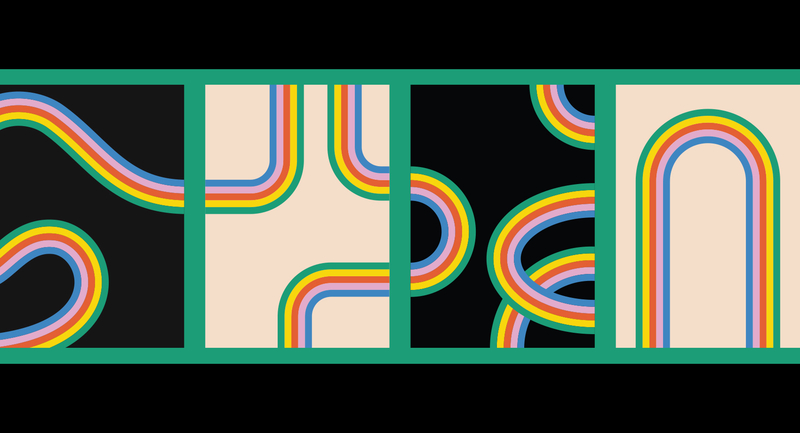There is a deep longing among educators and parents alike for schools to be places where children want to be rather than have to be, places where they thrive and are eager to engage in their developmental imperative to connect with others, learn, and grow. We long for learning environments that foster wonder, playfulness, laughter, movement, creativity, and adventurous learning. The accountability movement in schools has brought a needed focus to issues of equity and achievement in schools, and this has required schools to develop standardized measures for the comparison of school outcomes across contexts. Yet the lessons of the accountability movement have painfully reinforced the truth of the adage that "what gets measured is treasured." A fearful focus on high-stakes tests has too often resulted in a constricted curriculum and uninspiring instruction (Ravitch, 2010).
Multiple-choice tests cannot assess some of our highest aspirations for children, such as curiosity, a love of learning, and resourcefulness. For students to be successful in the emerging economy, they'll need to cultivate skills and aptitudes for innovation, adaptability, and self-direction. They'll also need to develop leadership and social skills and the sensitivity to work in cross-cultural settings. Yet, these vital characteristics are beyond the scope of current standardized tests.
To invite a new conversation about our larger aspirations for our students and schools, our team of scholars at the William & Mary School of Education developed a measure of school climate that begins to capture some of these aspirations, in the hope that it might lead to strengths-based and inspiring conversations about how schools can move toward both cognitive and emotional engagement.
The Vibrant School Scale
To design our measure, which is called the Vibrant School Scale, we initially explored our own and others' notions of what characterized a vibrant school, generating a large number of survey items to capture the longings expressed by educators, parents, and students. We then conducted a pilot study, inviting several hundred school leaders, teachers, and parents to respond to the survey about a school they knew well. A factor analysis of their responses revealed three strong dimensions of school vibrance: enlivened minds, emboldened voice, and playful learning. We assessed each of these dimensions using a set of seven items. (The survey is available, free of charge.) One such vibrant school we've recently learned about is Discovery Elementary in Arlington, Virginia. It is housed in an award-winning Net Zero Energy building, but it is the people who make the school special. A spirit of adventure pervades the school environment, with each grade-level learning space named for a different habitat and a kind of adventurer. For instance, the lower level of the school has spaces for backyard explorers (kindergarten), forest trailblazers (1st grade), and ocean navigators (2nd grade) to investigate life on our planet. The upper level is devoted to the sky, with learning spaces in which atmosphere aviators (3rd grade), solar system pioneers (4th grade), and galaxy voyagers (5th grade) contemplate the mysteries of the heavens.
Enlivened Minds
A vibrant school has an intellectual and expressive environment where the creativity of students, teachers, leaders, and parents is fostered and can flourish. Nurturing student curiosity is the driving force behind this kind of environment. Teachers invite questioning and can unleash students' natural drive to fuel their learning. Educators encourage a healthy skepticism and teach students to question assumptions and consider new perspectives. Controversy is not avoided, but confronted and critically explored, stoking more curiosity and creativity in an energetic cycle of learning.
From its inception, Discovery Elementary was designed to support experiential learning and encourage students to become stewards of the environment. Students can observe atmospheric conditions in the weather station; monitor the school's energy production and consumption through an interactive dashboard; and taste, smell, and explore the living ecosystems of the vegetable, butterfly, and bio-retention gardens.
Leaders foster this kind of an engaging learning environment by giving teachers permission to try something different than the status quo—and by being creative themselves. An environment of collegiality and openness between leaders and faculty results in classrooms where teachers and students alike feel supported to take the risks that new learning and innovation require.
Leaders of vibrant schools look for and celebrate new thinking among all members of the school community. The School Retool project, for example, uses design-thinking principles to help school leaders cultivate greater empathy for learners and to redesign their schools to foster deeper learning (Hofer & Johnson, 2016). Principals are invited to take inspiration for innovation from a set of big ideas, but to begin the change process with a series of "small hacks" to reduce the level of risk. By orchestrating some quick wins, the process fuels the energy to keep the process of innovation moving. Emboldened Voice
Vibrant schools are open and responsive, which means that decisions about curriculum, instruction, programming, and policy are informed by the experiences and perspectives of those they affect, including teachers, students, and parents. This is not simply about the freedom to speak up; it is also the assurance that one's voice will be taken seriously and responded to with respect. In a vibrant school, people are comfortable revealing themselves to others, confident in an abiding sense of care. Feeling that one's voice matters fosters a sense of belonging and a sense that there is always someone to turn to for help.
Leaders can create specific opportunities—both publicly in communal settings and privately in confidential ones—for teachers, students, and families to provide feedback about decisions. Fostering student voice requires that principals trust their teachers to make in-the-moment decisions about curriculum and instruction (Tschannen-Moran & Gareis, 2015). Inviting student voice and choice places teachers in a situation of vulnerability that relies on the support and trust of leaders.
At Discovery Elementary, one project that invited emboldened voice was a month-long project in which all members of the school community were challenged to consider their use of plastic and its impact on the environment. They watched a documentary on the topic and spoke with the scientist who had produced the film. They asked questions and sought advice. Students, parents, and teachers were then invited to sign a pledge to reduce or eliminate the use of plastics where they could.
Playful Learning
Academics in a vibrant school are not undertaken as drudgery, but with a playful spirit. There is a growing recognition of the importance of play to human psychological and physical health. Young mammals have a natural instinct to play, and young humans are no exception. Movement and play help to stimulate interest and engagement and support developing young minds. Across various animal species, the most intense periods of play are associated with the period of most rapid brain development, leading scientists to speculate that play is intricately involved with the development of cognitive capacity (Brown & Vaughan, 2010).
Play is also increasingly recognized as a source of creativity and innovation. An environment where student initiative is encouraged, and curiosity and creativity are nurtured, is bound to be more exciting, engaging, and fun. For example, at Discovery Elementary, a twisting yellow slide provides a fun way for students (and teachers!) to travel from the sky level to the Earth level and contributes to a playful atmosphere.
Further, the notion of low-stakes learning can be helpful. Students should be able to pursue their curiosity without a looming evaluation or judgment at the end of every learning journey. Teachers can model this kind of learning by sharing with students how they are pursuing their own curiosities and passions through reading, workshops, or other means. School leaders can foster a playful learning environment by modeling a sense of play themselves, and by expressing approval and enjoyment of the spirit of play they see in classrooms.
Toward More Vibrant Schools
The Vibrant School Scale is a useful tool for members of school communities to assess the collective perceptions of school leaders, teachers, parents, and students on the three dimensions of enlivened minds, emboldened voice, and playful learning. Participants are then invited to host strengths-based conversations to explore and build upon existing areas of vibrancy within their school communities (see the sidebar "From Talk to Action: Appreciative Inquiry"). We're confident that education leaders will find this a fun and productive way to engage their school communities to envision and cultivate more vibrant schools.
From Talk to Action: Appreciative Inquiry
In developing the Vibrant School Scale, we intend to spark invigorating conversations about how to bring greater vibrance into school communities. Appreciative inquiry provides a structured, strengths-based process for hosting these conversations (Whitney & Trosten-Bloom, 2010). The purpose of appreciative inquiry is to explore and amplify strengths—that is, find examples of what you want, then design and execute strategies that replicate and expand on those strengths. The Four-I cycle of the appreciative inquiry process is a good guide for structuring these aspirational conversations (Watkins, Mohr, & Kelly, 2011).
Initiate: Focusing on Strengths
The first I, Initiate, involves choosing the area of inquiry and deciding to use a strengths-based approach to address that area. To initiate an inquiry into a more vibrant school climate, a leadership team or an action research team might choose to focus on all three of the dimensions of the Vibrant School Scale or on just one or two to begin.
Inquire: Sharing Stories
The second I, Inquire, begins with designing an interview protocol and conducting paired interviews in which people tell stories and explore the positive experiences they've had in the area of inquiry. Through these interviews, participants discover instances of vibrancy already existing in the school community on which to build. For instance, if a school is exploring enlivened minds, sample interview questions might include the following: "Tell me a story about your best experience working or learning in an environment that inspired new thinking, where you were pushed to be innovative and develop novel solutions to a complex problem. Who was involved? What challenges did you face? What were the conditions that supported creativity and innovation?"
After pairs discuss their experiences, participants identify three to five themes that energized and enlivened them. These are shared with the large group and become the basis for planning to make these dynamics more prevalent in the school.
Imagine: What If?
The next phase in the process, Imagine, involves breaking into small groups and developing vivid images of what the school would be like if it honored fully the themes of vibrancy. Participants develop creative presentations (drawings, collage, music, or skits) of what the school might be like if it became vibrant in the imagined ways. Participants then develop a set of claims for the school, sometimes called "possibility statements," framed as though those vivid images were already present and fully expressed in the school. A possibility statement might assert, "Curiosity is at the center of our learning community. Our minds are alert and engaged in exploring new ideas and creating novel solutions to complex problems. We look forward to the work we do together because learning is fun."
Innovate: Taking Action
In the Innovate phase of the process, small groups design and plan action steps for moving the school closer to the positive images developed in the previous stage. Participants schedule activities and plan the logistics of bringing these plans to fruition. Strategies over which the team members have control are listed as "commitments." Strategies that require the involvement, permission, or resources from another party are listed as "requests." For example, a group of teachers who want to create a school garden might make a commitment to do the research to design the garden but might make a request to the Parent Teacher Association for funding. After the school has tried the innovations, the process begins all over again in an iterative action research process leading to organizational learning, growth, and change.








